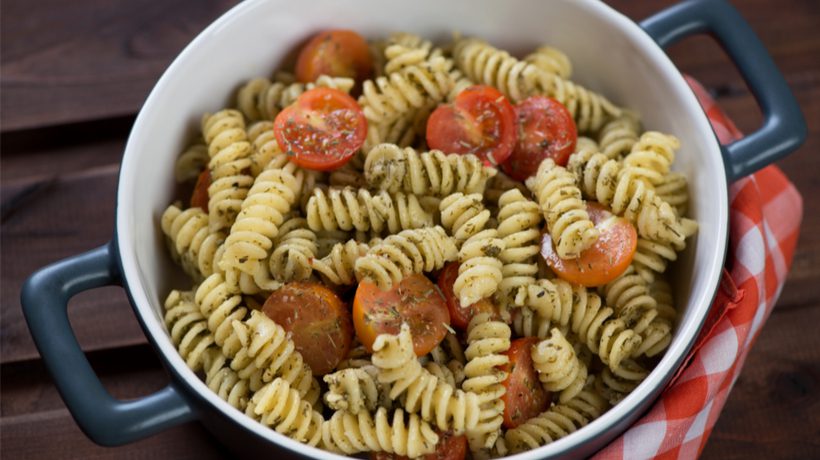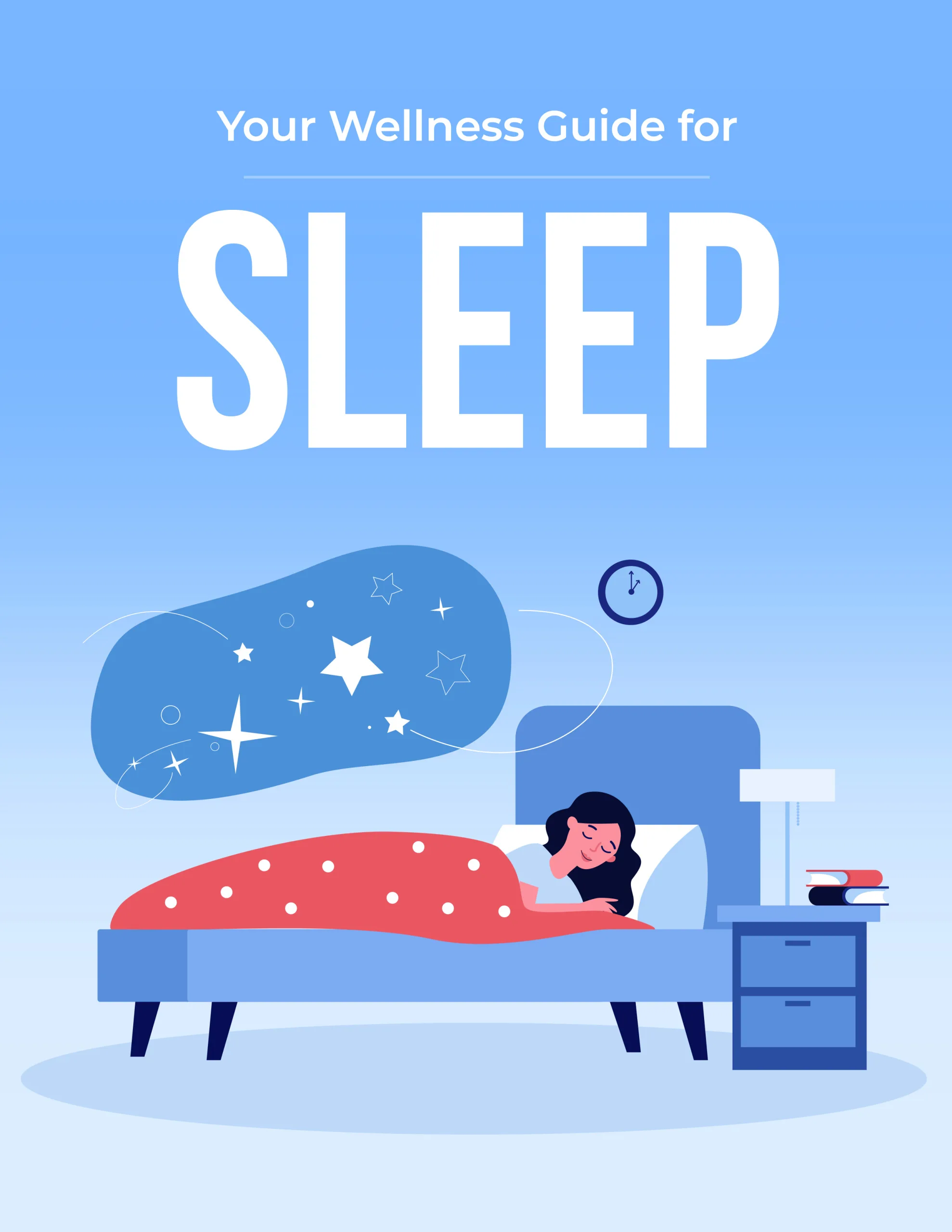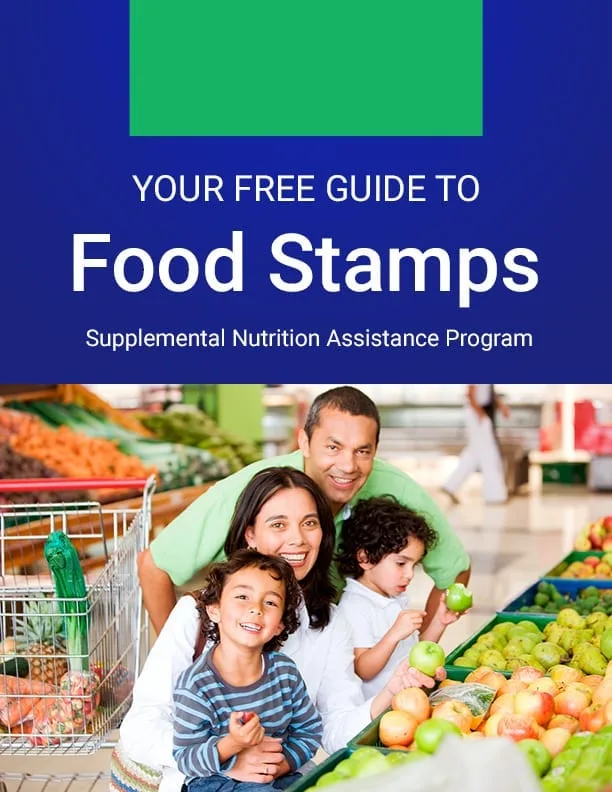How to Go Zone: Diet Guide
How to Go Zone: Diet Guide
We are privately owned and not affiliated with the government in any way or form.

The Zone diet has been around for several decades, but is there any truth to its claims? The diet’s creator, Dr. Barry Sears, proposes that inflammation caused by one’s diet leads to chronic illnesses. He encourages Zone diet followers to eat a certain ratio of protein, carbs and fats at every meal in order to lose weight and fight disease. Unlike many fad diets, this one recommends that individuals follow it throughout their lives. Is it worth making the switch and getting “in the zone”? Read on and decide.
What is the Zone Diet?
In the 1970s, Dr. Barry Sears’ father died from a heart attack at just 53 years old. At the time, Dr. Sears was doing postdoctoral research on the molecular structure of fat. Motivated by his father’s death, he redirected his research to the relationship between fats and cardiovascular disease. Over the next two decades, he concluded that insulin and other hormones cause inflammation and in turn have caused the obesity epidemic. The aim of the Zone diet is simple enough — stay within the “zone” of proper hormone levels to shed pounds, reduce sickness and slow aging.
The Zone, Explained
So what does it take to be “in the zone?” This refers to keeping three blood test results within certain parameters.
TG/HDL
This stands for the triglyceride to HDL cholesterol ratio. Triglycerides are a type of fat in the blood and HDL is the “good” cholesterol, which helps remove LDL, or “bad” cholesterol from your system. A high TG/HDL indicates a higher risk of heart attack and stroke. General recommendations are to keep this marker at less than 2; the Zone diet wants it to be less than 1.
AA/EPA
This ratio shows the amount of arachidonic acid (AA), an inflammation-causing omega 6 fatty acid to eicosapentaenoic acid (EPA), an anti-inflammatory omega-3 fatty acid. AA is found in foods such as vegetable oils, butter, fatty poultry and red meat, while EPA is found mostly in fatty fish such as salmon and tuna. Most experts consider an AA/EPA of between 1.5 and 3 to be low risk, and the Zone agrees.
HbA1c
This is a measure of the blood sugar attached to hemoglobin and is an indicator of risk for diabetes, or for those with diabetes, shows when they are at risk for serious symptoms. For those without diabetes, the normal range is between 4% and 5.6%. The Zone wants you to keep this marker to under 5%.
All of these can be measured through a fasting blood test at your doctor’s office or at a lab. There are also home testing kits available online.
The Zone Diet
The idea of the Zone diet is to eat in such a way that these health markers are kept in the healthy, low-risk range. As mentioned earlier, the diet requires that you maintain certain proportions of key nutrients. That means a third of your plate should be protein, two-thirds carbs and you should add a bit of monounsaturated fat as well. Examples include olive oil, avocado or almonds. The Zone food pyramid has vegetables at its base, followed by fruits, low-fat protein, monounsaturated fat and grains and starches at the top.
In addition to eating in these proportions, the Zone diet is calorie-restricted. Women on the Zone diet are restricted to 1,200 calories a day, while men get up to 1,500 calories. Sears claims that dieters don’t need fancy tools to count their calories, however. They can use the hand-eye method, which suggests using their hands to measure portion sizes and to remind them to eat no less than every five hours (though they may want a watch for that as well).
Food Blocks
The other way to keep track of eating is the “Zone food block” method. A food block is the proper amount of each macronutrient: protein, carbohydrate and fat:
1 block equals:
- Protein: 7 grams
- Carbohydrate: 9 grams of net carbs (total carb grams minus grams of fiber)
- Fat: 1.5 grams if your protein source is animal-based; 3 if your protein source is vegetarian
To get a sense of how much food is in a block, here are some examples:
- Protein
- 1 ounce of meat
- 2 large egg whites
- 2 ounces sea bass
- 1 ½ ounces salmon
- 1 ounce chicken breast
- Carbohydrates
- 1 large artichoke
- 4 cups of cauliflower
- ⅓ cup lentils
- ½ apple
- 1 peach
- 1 ⅓ cup raspberries
- Fats
- 3 whole almonds
- ⅓ tsp olive oil
- ½ tsp peanut butter
- Grains
- ⅓ cup oatmeal
- ¼ cup cooked barley
The goal is to eat one block each of protein, carbohydrate and fat at every meal and just one block per snack (twice a day).
The average male eats 14 Zone blocks per day, while a female eats 11 Zone blocks. A meal consists of three to four blocks and snacks are always one block.
What to Eat (and Not Eat) on the Zone Diet
The main type of food that you eat on the Zone is non-starchy vegetables, followed by lower-sugar fruits, low-fat proteins, monounsaturated fats and finally, grains and starches. Here are the recommended foods in each category:
Vegetables:
- Artichokes
- Asparagus
- Brussel sprouts
- Broccoli
- Cauliflower
- Kale
- Mushrooms
- Spinach, turnip greens, Swiss chard, collard greens
- Zucchini, yellow squash
- Onions and leeks
- Lentils, chickpeas, kidney beans, black beans
- Eggplant
- Cabbage, bok choy
- Green or wax beans
- Lettuce of all kinds
- Peppers of all kinds
- Tomatoes
Fruits:
- Blueberries, strawberries, raspberries, blackberries
- Apples, pears
- Apricots
- Cherries
- Light fruit cocktail
- Grapefruit, lemon, lime, orange
- Grapes
- Kiwis
- Plums
- Nectarines, peaches
Protein:
- Skinless chicken
- Fish
- Seafood
- Egg whites
- Tofu
- Turkey
- Very lean cuts of meat
- Low-fat dairy products
- Plant-based meat substitutes
- Greek yogurt, plain, no-fat
- 1% milk
- Non-fat cheese
- Low-fat cottage cheese
- Turkey bacon
Fats:
- Almond butter, almond oil and almonds
- Avocado
- Cashews
- Olive oil, olives
- Peanut butter, peanut oil, peanuts
- Tahini
Grains:
- Barley
- Oatmeal
On the Zone diet, you will want to avoid the following foods:
- All fruit juices except lemon
- Condiments like ketchup, barbeque sauce, etc.
- Syrups like maple, molasses, honey
- Sugars of all kinds
- Salty snacks like potato chips, tortilla chips, etc.
- Sugary foods like ice cream, cakes, candy and cookies
- Sugary fruits like bananas, melons, dates, figs, guava, mango, papaya, pineapple, prunes
- Nearly all grains and grain products like bread, pasta and cereal
- Bacon
- Butter, sour cream, cream, hard cheeses
- Lard
- All alcohol
- Ground beef
- Hot dogs, pepperoni and sausage of any kind
Does the Zone Diet Help You Lose Weight?

Although the Zone diet is promoted as a healthy lifestyle way of eating, one of the benefits cited is that it helps people lose weight. U.S. News & World Report ranks the Zone diet as #20 in the Best Diets Overall category out of 39 diets, #21 in Best Fast Weight-Loss Diets and #26 in Best Weight-Loss Diets.
According to a systematic review of diet research published in the BMJ Journal, the Zone was among the three popular diets that had the biggest effects on weight reduction and blood pressure, resulting in an average of nine pounds lost after six months. Another study compared Zone to Atkins (low carb), low-fat (Ornish) and low-saturated-fat/moderate carb (LEARN). After two months, Zone dieters had lost six pounds on average, but after a year, it went down to 3.5 pounds, less than the weight loss for the other two diets.
However, according to the Zone, the weight you lose will be all fat, and not muscle or water.
Pros of Going Zone
Is The Zone diet for you? Since it’s not as extreme as some low-carb diets, it may be easier to maintain long term. Check out some of the benefits of going Zone.
- Weight Loss. With such restrictive calorie limits, you’re likely to lose weight on the Zone diet. Losing even a small amount of weight can improve your health and risk factors for chronic diseases. Whether the weight stays off long term on this diet is a different story.
- Micronutrient content. The Zone diet is relatively balanced compared to other diets, so you aren’t at a huge risk for missing out on any key nutrients. While the official Zone diet sells supplements, those are optional.
- Easy to start, easy to follow. The guidelines for portion control and eating out, for instance, are pretty simple to follow and only involve using your hand to measure portions.
- No extra foods and products. Unlike some diets, there are no packaged foods you need to buy to follow this one.
- Adaptable to eating restrictions. With two-thirds of your plate being filled with fruits and veggies, it’s easy to adapt the Zone diet to vegetarian, vegan and gluter-free eating habits.
- Low-salt diet. If you’re worried about your blood pressure, this diet emphasizes fresh food instead of processed food, which may reduce your sodium intake.
- Sugar control. By limiting refined sugars and emphasizing natural foods, the Zone diet can help stabilize blood sugar and limit cravings.
- Ready-made plan. Because it’s been around for a while, there are plenty of resources online and elsewhere. If you need a food journal, grocery guide and dining-out tips, they’re all just a click away.
- Frequent meals. If you’re someone who gets hungry often, then the Zone diet may be for you. The diet recommends eating small meals five or six times a day.
Cons of Going Zone
While it doesn’t limit specific foods and emphasizes portion control, both good points in its favor, the Zone diet isn’t for everyone. Watch out for these warning signs before you undertake any lifestyle change like Zone.
- Limited research. The theories behind the diet’s weight loss method lack extensive research. This means not every body type will be suited to the restrictions of the diet.
- Heavy restrictions. Keeping track of portion sizes and sticking to a limited number of calories can be difficult to keep up with. The burnout factor on diets like these is pretty high.
- Small portions. The calorie restriction leads to small portions of filling proteins and complex carbohydrates, so you may be hungry.
- Not great for athletes. If your goal is to work out a lot, you may want to avoid the Zone diet. According to a study published in the Journal of Strength and Conditioning Research, athletes who followed the diet lost weight but also lost endurance, feeling more tired during activity after just one week.
- Cost. While you won’t be buying any special products, switching over to buying only fresh foods may put a strain on your budget. Make sure to look for sales, buy in bulk and buy produce that’s in-season.
- Kidney risk. A high protein diet like Zone can put stress on the kidneys, which may be risky for some people.
- Moderate to high fat. Although the fats favored by the Zone diet are the healthy kind, the American Heart Association warns that the diet may be too high in fat for those who need to pay attention to their blood pressure and cholesterol levels. Too much fat can also lead to weight gain.
- Lots of meals. Since you have to eat every five hours, you will have to plan in advance to have the appropriate food portioned out and handy.
How to Go Zone
Getting Started
There are plenty of books on the Zone diet, including some from Dr. Sears himself. These will help you start controlling your portions and start thinking about food in a new way. With any major change to your diet, you’ll want to take it slow. First, start counting your calories, preferably with an easy-to-use app like My Fitness Pal. Cut your caloric intake by 300 calories every week until you get to the recommended 1,200 or 1,500 calories per day. Next, you’ll want to take a look at your food sources.
For portion control, you can also use the hand method. A serving of protein should be no bigger than the size of your palm. For the sizes of other food groups, you can download the free Zone food block guide from the official Zone diet website. If you find yourself missing sweets, you can have fruit for dessert. When fruit is cooked, its natural sugars caramelize, so it tastes sweeter. You can also buy a number of Zone products online or in some grocery stores such as protein bars, shakes, breakfast cereal and their special pasta.
Zone Diet Tips
- Eat a Zone meal or snack within one hour after waking up.
- Have a Zone snack before going to bed.
- Eat low-fat protein with every meal.
- After eating a meal, eat again 4-6 hours later. After eating a snack, eat again in 2 – 2 ½ hours, even if you’re not hungry.
- Drink at least eight 8-ounce glasses of water daily.
- Drink a glass of water half an hour before a meal.
- Have a Zone snack half an hour before exercising and another within 30 minutes of exercising.
- Limit protein portions to the size of your hand.
- Prepare some low-fat protein and keep it handy, such as hard boiled egg whites, sliced turkey breast and tuna salad.
- If you are hungry after a meal, readjust the protein-to-carb ratio in your next meal until it is filling.
- Eat the protein part of your meal or snack first.
- Think of bread, pasta and other starches as condiments rather than side dishes.
Shopping for the Zone Diet
When shopping for the Zone diet, your focus should be on whole foods, particularly vegetables and fruits, so more than two thirds of your cart should be filled with produce (since it is bulky). Shop the perimeter of the store: produce, meats/seafood and dairy. Frozen fruits and vegetables are also fine as long as they have no added sugar, salt, breading or sauces.
Good lean protein options include:
- Lean beef, pork, lamb, veal and game.
- Skinless chicken and turkey breast.
- Fish and shellfish.
- Vegetarian protein, tofu and other soy products.
- Egg whites.
- Low-fat cheeses.
- Low-fat milk and yogurt.
Good options for monounsaturated fats include:
- Avocados.
- Nuts, such as macadamia, peanuts, cashews, almonds or pistachios.
- Peanut butter.
- Tahini.
- Oils, such as canola oil, sesame oil, peanut oil and olive oil.
And good options for carbs include:
- Fruit, such as berries, apples, oranges, plums and more.
- Vegetables, such as cucumbers, peppers, spinach, tomatoes, mushrooms, yellow squash, chickpeas and more.
- Grains, such as oatmeal and barley.
Foods to avoid on the Zone diet include:
- High-sugar fruits. Such as bananas, grapes, raisins, dried fruits and mangoes.
- High-sugar or starchy vegetables. Like peas, corn, carrots and potatoes.
- Refined and processed carbs. Bread, bagels, pasta, noodles and other white-flour products.
- Other processed foods. Including breakfast cereals and muffins.
- Foods with added sugar. Such as candy, cakes and cookies.
- Soft drinks. Neither sugar-sweetened nor sugar-free drinks are recommended.
- Coffee and tea. Keep these to a minimum, since water is the beverage of choice.
Preparing for the Zone Diet
While the Zone diet doesn’t prohibit specific foods, the ratio of carbs, protein and fats may be unfamiliar to your body. You may feel a bit sluggish and tired if you’re cutting your carb intake significantly, but these symptoms will fade after a week or so. Eventually, you should feel more energized since your body isn’t relying on a quick fix from carbs and sugar all the time. You may also feel hungry from the calorie restriction. Make sure you are eating at least every five hours to tamp down hunger. Other than that, you shouldn’t find too many side effects from this diet other than feeling better from all the natural food you’re eating.
Eating Out on the Zone
Most restaurants serve some kind of low-fat protein with vegetables, so you can easily find somewhere to eat out and stay in the Zone. However, restaurant meal serving size is usually much larger than you should be eating on the Zone, so immediately ask for a to-go box so that you can apportion out the extra protein to eat later. Rather than getting the potatoes or rice that typically comes as a side, order extra vegetables. Here are some options:
- Seared ahi tuna appetizer with a side or two of vegetables
- Chicken or shrimp caesar salad with dressing on the side
- Grilled chicken breast with a side of steamed vegetables
- Vegetarian lettuce wraps
- Stir fried entrees with plenty of boiled, steamed or broiled vegetables
- Broth-based soups with lots of vegetables
- Caprese salad
- Grilled salmon with vegetables
- Guacamole with jicama chips
A Day in the Life of the Zone Diet

Ready to try the Zone diet? With all the variety this diet allows, there’ll be no shortage of delicious and healthy recipes for you to try. Check out this day’s-worth of easy-to-prepare meals.
Breakfast: Almond blueberry orzo
Ingredients
- 1/2 cup orzo
- 1/2 cup two-percent milk
- 1/2 cup blueberries
- 4 teaspoons almond butter
- 1 teaspoon vanilla extract
- 1/2 teaspoon cinnamon
- Stevia sweetener (to taste)
- 2/3 cup zero-fat Greek yogurt
Cooking Instructions
- Prepare the orzo according to the package directions. Drain it and add it back to pan.
- Stir in the milk, lower the heat and continue to cook down.
- Stir in the blueberries, almond butter, vanilla, cinnamon and stevia sweetener until it’s all warmed and at the consistency you desire.
- Remove from the heat and split into two bowls. Top each with a 1/3 cup of yogurt and serve.
Lunch: Apple-walnut pasta with chicken sausage
Ingredients
- 1/2 cup pasta fusilli
- 1/2 teaspoon olive oil
- 2 tablespoons dry white cooking wine
- 1 slice onion
- 1/2 link sliced sweet apple chicken sausage
- 1/4 medium diced apple
- 3/4 teaspoon crushed walnuts (toasted if you like)
- 1 cup baby spinach leaves
Cooking Instructions
- Cook pasta fusilli as directed. Drain, saving 1/2 cup of liquid and set aside.
- Heat oil and wine in nonstick skillet. Sauté onion until translucent, about three to four minutes.
- Add cut sausage and cook until heated through, about two minutes.
- Stir in diced apples, walnuts, spinach and fusilli.
- Add some of the reserved water, if needed.
- Cook for an additional two minutes until all ingredients are warm and spinach is wilted.
Dinner: Baked cod with beans and salad
Ingredients
- 2 teaspoons extra virgin olive oil (divided)
- 1 tablespoon oatmeal
- 4 ounces of cod
- 2 slices of tomato
- 2 cups of green beans
- 1 side salad with dressing
- 1/2 cup blueberries
Cooking Instructions
- Preheat oven to 400 degrees Fahrenheit.
- Mix one teaspoon of olive oil and the oats in a small dish. Mix with salt and pepper to taste.
- Place cod in a shallow baking dish and cover with oat mixture.
- Slice tomatoes and place some slices on top of the cod and oats.
- Bake until the fish flakes (about 15 to 20 minutes, depending on thickness of fish).
- Make the small side salad with dressing and steam the green beans.
- Top the salad with blueberries.
- Serve fish with beans and salad.
Snack Suggestions: Almond and blueberry yogurt, applesauce and cottage cheese, asparagus and artichoke salad, berry freezer pops, blackberry shrimp salad, cauliflower popcorn, celery with hummus, fruity orzo egg muffins or ham and apple wrap.
Drink Suggestions: Water with lemon, fruit or veggie juices, low-fat or skim milk, tea and red wine (on occasion).







